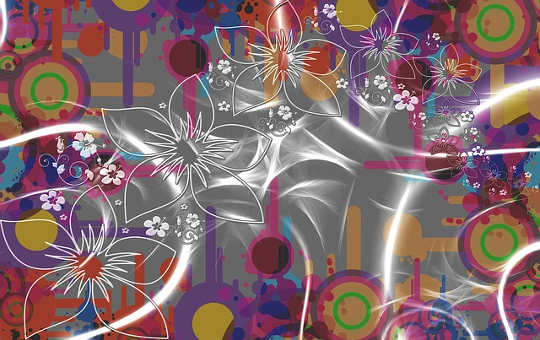
Most people would agree that connection is a basic human need. Yet these days, it can be hard to come by. Vivek Murthy, Surgeon General of the United States from 2014 to 2017, claims that “Loneliness is a growing health epidemic.” He writes, “We live in the most technologically connected age in the history of civilization, yet rates of loneliness have doubled since the 1980s. Today, over 40% of adults in America report feeling lonely, and research suggests that the real number may well be higher.”
As a physician, Murthy is keenly aware of the devastating effects this is having on our health:
During my years caring for patients, the most common pathology I saw was not heart disease or diabetes; it was loneliness. … Loneliness and weak social connections are associated with a reduction in lifespan similar to that caused by smoking 15 cigarettes a day and even greater than that associated with obesity. … Loneliness is also associated with a greater risk of cardiovascular disease, dementia, depression, and anxiety. … For our health and our work, it is imperative that we address the loneliness epidemic quickly.
In part, this epidemic reflects the radical changes that family structures have undergone in recent decades. Today, 35 million Americans live alone. In 1970, 17% of US households were comprised of a single person. Back then, this was considered a shocking number, yet today, it has jumped to 28%.
The Quality of Our Connections
However, simply widening our social circle is not the answer. What ultimately matters far more than the quantity of our social connections is their quality. We all know what it’s like to be surrounded by people yet feel profoundly lonely, invisible and isolated. So we need to ask ourselves whether our relationships have the intimacy, depth, and authenticity we crave.
For many people, the answer is no. Over and over, women tell me that for much of their life, they have felt starved for intimacy—not sexual intimacy, but that sense of deep connectedness that links heart to heart and soul to soul. This, despite the fact that they had family, friends and community
It doesn’t have to be this way. Together, we have the power to initiate change, so that future generations won’t have to suffer the same kind of loneliness that many take for granted today.
Embodying the Mandala
The circle is probably the most ancient healing tool in human history. I believe that it’s also ideally suited to serve our present needs. Whenever I ask people what, in their opinion, our world need most at this time, the most common answer I hear is: Unity. We need to awaken to our oneness as a planetary family and a global community. Unity is the basis for peace. Unity empowers us to tackle the enormous challenges we face. Unless we can awaken to our oneness and join forces as a planetary community, our prospects of surviving are dim.
It so happens that throughout the ages, the circle has been revered, not only as a symbol of oneness, but also as a tool that has the power to connect and unite us. Circles can lead us from separation to unity, from discord to harmony, from isolation to connection.
It’s hardly surprising, then, that in recent decades, various types of mandala-based practices have become immensely popular. At a time when billions of people are struggling with fear, stress, turmoil and turbulence, our collective consciousness recognizes the mandala as a medicine that can help us access the sense of wholeness we need. And so, labyrinths are springing up in our back yards, book stores are carrying stacks of mandala coloring books, and hordes of tourists are flocking to ancient Celtic stone circles like Stonehenge.
Circlework, the subject of this book, is yet another way of tapping the healing power of mandalas. However, instead of painting, drawing or building them we embody them. By that, I mean not only that we literally use our bodies to form a circle. Many groups sit in circles, yet they aren’t doing Circlework. In the practice of Circlework, our intention is always to create a true mandala—a vortex of healing presence where we might remember our goodness, wholeness and holiness.
Taking it to the Middle East
Since 2005, I’ve been leading circles for Jewish and Palestinian women in the Middle East. Needless to say, the impact of violence, war and trauma on these women is immense. Sometimes, the grief and despair the circle is required to hold feels overwhelming. Yet ultimately, there is healing, hope, and an undeniable sense of holiness.
Working in the Middle East has helped me understand the truly revolutionary power of connection. In the West, it’s clear how disconnected from ourselves and others many of us feel. But in Israel and Palestine, I saw that connection is also the key to peace, and the answer to conflict not only between individuals but also between groups and nations.
Most governmental responses to conflict, both in the Middle East and in the United States, are fear-based, and as such, they favor disconnection over connection. One of the most horrific results of this approach is the monstrosity of a wall that Israel has erected around the West Bank.
The more fear, anger, hatred and mistrust we feel toward others, the more courage it takes to open to connection. It is easier—far easier—to build yet another wall or install yet another military checkpoint than to face the “others” with all the physical and emotional vulnerability this entails. Will they be willing to hear our pain? With they be able to empathize with us, or let go of the past? There are no guarantees. And yet, I believe there is no other path to peace.
Bringing It Back to the USA
In my circles in the Middle East, we essentially do the same thing as we do in the United States: we connect—with ourselves, with each other, and with Spirit. Over and over, I’ve seen that how in the process, our relationships transform. We begin to feel compassion and even love for people whom we formerly distrusted, feared or even hated. We begin to recognize peace as a very real possibility, and indeed as the only option that makes any practical sense. The barriers between us dissolve, and our oneness stands revealed, like the full moon emerging from billowing clouds.
Regardless of where a circle is held, the task of bringing down the walls that separate us is always the same. In my circles in the United States, the enmity between Jews and Palestinians is not our focus. Yet here, too, our circles tend to bring us face to face with people whom we might ordinarily not meet. The very young meet the very old. The wealthy meet the poor. White women connect with women of color. One by one, our prejudices crumble and the labels we have slapped on each other dissolve.
The Seven Needs
As tribal circles evolved to address the needs of tribal peoples, so our circles must address our present needs. The following seven are the main ones that Circlework focuses on.
1. The Need to Bridge our Differences
Skillfully facilitated circles can bring us together in ways that reveal our common humanity and can help diverse groups of people—including those divided by conflict, war, hatred and distrust—find healing and reconciliation. Of course, exposing oneself to diversity of any kind can be challenging. At the same time, it’s part of what makes our circles so powerful and exciting. How else shall we heal the fault lines that are devastating our communities and our world?
By allowing our focus to shift from our differences to our common humanity, we lay the foundation for peace, not only between individuals but also between groups and nations, races and religions.
2. The Need for Connection and Intimacy
Vast numbers of people no longer experience the closeness and connection they need. Such states of chronic deprivation leave them vulnerable to all sorts of problems, from drug and alcohol addiction to depression and violence. Circles can help by connecting people in ways that feel intimate and meaningful, but also comfortable and safe.
3. The Need for Community
Today, in a time when many traditional community structures have dissolved, circles are increasingly serving as a kind of womb space where new forms of community are being gestated. Not all circles have the intention of building long-term community, but among those that do, some have been very successful, lasting not just for years but decades.
4. The Need to Shift from Head- to Heart-Thinking
We are, as a society, addicted to what I call “head-thinking”—thinking that splits the mind from the heart. Divisive as it is, head-thinking has always been a problematic habit. Yet now that we have entered the global era, it’s become an unsustainable addiction that is causing tremendous harm.
The practice of heart-thinking places the mind in service of the heart. As we shift to heart-thinking, we find that our relationships become more harmonious and fulfilling. Heart-thinking helps us realize our oneness—not as an abstract concept, but as a felt, embodied truth. By committing to the practice of heart-thinking, we support a collective shift that can make the difference between war and peace, annihilation and survival.
5. The Need for Stress Relief
These times we live in are immensely stressful. For some, the cause of stress may be war, poverty or displacement. For others, it might be job pressure, poor health, or relationship problems. One way or another, we’re all swimming through a thick stew of insecurity and fear. Even if our personal lives are in great shape, one glance at the morning news can make our blood pressure soar. Clearly, we need support in staying centered, relaxed, and balanced.
Circlework integrates a wide range of practices designed to foster inner peace. Movement and touch, for example, are prime tools for alleviating stress. Combine them with the centering medicine of the mandala, with guided meditations, and supportive community, and you have an extremely effective form of stress relief.
6. The Need for Spiritual Nourishment
In the past, most people looked to religion to address their need for intimacy with Spirit. Yet today, religion alone is not enough—not, at least, if we identify as planetary citizens. Religion is, after all, an essentially tribal phenomenon. Every religion evolved out of a specific cultural context, in response to the needs of a specific people. Yet as planetary citizens, we need to be able to share sacred space with all kinds of people, including those whose beliefs differ from ours.
Circles are the ideal tool for accomplishing this. Universally recognized as a sacred symbol, the circle can unite us in a sense of sacred presence that transcends all belief systems.
7. The Need to Transform Patriarchy
Patriarchy, especially in its post-industrial manifestations, is unsustainable. Regardless of whether we’re male or female, it warps our consciousness, causing us to equate vulnerability with weakness and violence with strength. All societies governed by patriarchal values are riddled with violence. The situation is all the more dangerous considering that in the global era, war, too, tends to be a global phenomenon. The deployment of nuclear weapons— a possibility that patriarchy loves to flirt with—would guarantee a global catastrophe of unprecedented proportions.
Circlework recognizes the inhumane and unsustainable nature of the values and beliefs that patriarchy instills in us. Instead, it cultivates values such as gentleness, compassion, humility and generosity.
Copyright 2018 by Jalaja Bonheim. All Rights Reserved.
Reprinted with permission of the publisher: Meetings in Sacred Space.
Article Source
The Magic of Circlework: The Practice Women Around the World Are Using to Heal and Empower Themselves
by Jalaja Bonheim
 The Magic of Circlework includes the stories and voices of many women who are using Circlework to heal their lives and relationships. Anyone interested in the process of healing and evolution will love their stories of life-altering encounters and awakenings. At the same time, the author emphasizes that readers can use the principles of Circlework even if they never attend a circle gathering. Circlework is, after all, not just a group process. It's also a spiritual practice that approaches the circle as an inner healing medicine that all humans are born with.
The Magic of Circlework includes the stories and voices of many women who are using Circlework to heal their lives and relationships. Anyone interested in the process of healing and evolution will love their stories of life-altering encounters and awakenings. At the same time, the author emphasizes that readers can use the principles of Circlework even if they never attend a circle gathering. Circlework is, after all, not just a group process. It's also a spiritual practice that approaches the circle as an inner healing medicine that all humans are born with.
Click here for more info and/or to order this paperback book or purchase the Kindle edition.
About the Author
 Jalaja Bonheim, Ph.D., founder of the Institute for Circlework, is an internationally acclaimed speaker and award winning author who mentors women worldwide and has trained hundreds of circle leaders, gathering special acclaim for her groundbreaking work in the Middle East, where her circles unite Jewish and Palestinian women. She is the author of many books including The Sacred Ego: Making Peace with Ourselves and Our World which won the Nautilus Award for best book of 2015. Visit her website at www.jalajabonheim.com
Jalaja Bonheim, Ph.D., founder of the Institute for Circlework, is an internationally acclaimed speaker and award winning author who mentors women worldwide and has trained hundreds of circle leaders, gathering special acclaim for her groundbreaking work in the Middle East, where her circles unite Jewish and Palestinian women. She is the author of many books including The Sacred Ego: Making Peace with Ourselves and Our World which won the Nautilus Award for best book of 2015. Visit her website at www.jalajabonheim.com
Books by this Author
at

Thanks for visiting InnerSelf.com, where there are 20,000+ life-altering articles promoting "New Attitudes and New Possibilities." All articles are translated into 30+ languages. Subscribe to InnerSelf Magazine, published weekly, and Marie T Russell's Daily Inspiration. InnerSelf Magazine has been published since 1985.

Thanks for visiting InnerSelf.com, where there are 20,000+ life-altering articles promoting "New Attitudes and New Possibilities." All articles are translated into 30+ languages. Subscribe to InnerSelf Magazine, published weekly, and Marie T Russell's Daily Inspiration. InnerSelf Magazine has been published since 1985.



























